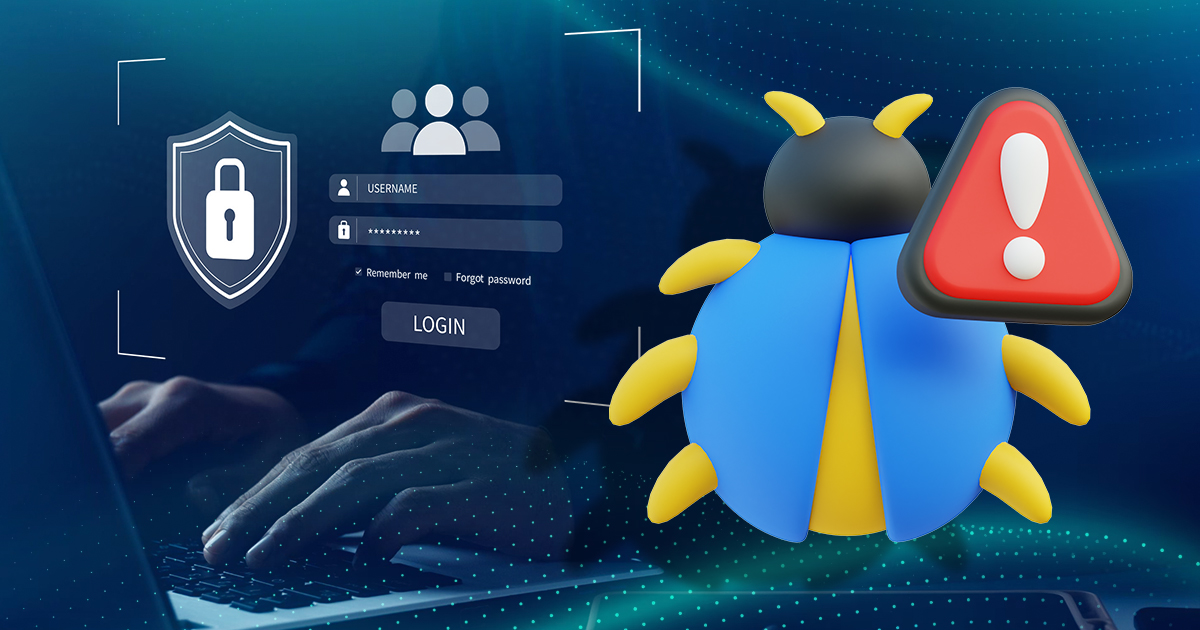Quantum computing is no longer a research concept, it’s a fast-advancing technology that could soon upend the encryption methods businesses rely on to keep data secure. If your organization uses VPNs built on traditional encryption like RSA or ECC, that protection may not hold for much longer.
Adversaries already understand this shift. Many are collecting encrypted data now, expecting to decrypt it later as quantum capabilities mature. That makes quantum-safe VPNs not a “future upgrade,” but a current security priority.
The Quantum Risk: What’s Really Changing
Quantum computers are a new kind of technology that process information much faster than regular computers. That speed creates a major risk: it could break the encryption methods that protect your business data today.
Most VPNs rely on two main types of encryption:
RSA (Rivest–Shamir–Adleman): Uses very large numbers to scramble data. It’s hard for regular computers to crack, which is why it’s been widely used for years.
ECC (Elliptic Curve Cryptography): Offers strong protection like RSA but uses smaller keys, making it faster and more efficient.
These methods work well now, but quantum computers could break them in just a few hours.
Hackers are already preparing for this. Some are collecting encrypted data now, planning to unlock it later when quantum tools become available. So even if your data is secure today, it may not stay that way.
Experts say “Q-Day”, the point when quantum machines can crack current encryption, could arrive by 2030. Governments are already acting on this risk. If you run a business, it’s time to start planning too.
In short: regulators are preparing. Adversaries are preparing. Businesses should too.
What Makes a VPN Quantum-Safe?
Quantum-safe VPNs are built to protect your data from future threats—specifically, from powerful quantum computers that could break today’s encryption.
They use new tools called post-quantum cryptography, designed to stay strong even when quantum attacks become real.
Most quantum-safe VPNs include:
- Proven new encryption methods approved by experts, like CRYSTALS-Kyber and CRYSTALS-Dilithium.
- Hybrid protection that combines current and future-proof encryption.
- Flexibility to upgrade your security without rebuilding your entire system.
It’s about staying secure now, and ready for what’s next.
Real-world deployments prove this is more than theory. In 2024, JPMorgan Chase partnered with Toshiba and Ciena to build a quantum-resilient 100 Gbps VPN tunnel across 46 km of fiber. The system used hybrid encryption and key refresh every two minutes, demonstrating both speed and resilience.
In another example, Vodafone and SandboxAQ tested PQC algorithms on standard smartphones, confirming performance with no meaningful lag in browsing or app use.
These aren’t proofs of concept, they’re blueprints for the next generation of secure communication.
Why Smart Businesses Are Moving Now
This goes far beyond a tech upgrade, it’s a long-term risk to your business.
If your company handles sensitive data, financial records, patient files, legal contracts, or anything confidential, you’re not just protecting it for today. That data needs to stay secure for years. But attackers aren’t waiting. Many are stealing encrypted data now, planning to break it later when quantum technology catches up.
When that happens, the consequences go beyond technical issues. We’re talking about lost IP, broken contracts, lawsuits, compliance failures, and reputational damage that’s hard to undo.
And the worst part? Most businesses are still behind. According to ISACA’s 2025 global survey, 65% of IT professionals are concerned that quantum computing will break current encryption. But only 27% say their organization is preparing, and just 11% have a dedicated team or strategy in place. That’s not a gap, it’s a blind spot.
Meanwhile, regulators are already moving. Agencies like the NSA, NIST, and the UK’s NCSC are publishing clear guidance. Compliance rules are coming. And the businesses that act now will be ready, while others play catch-up under pressure.
How Business Leaders Can Start Preparing
Transitioning to quantum-safe security doesn’t require a complete overhaul. It’s about assessing where you are today and building in flexibility for what’s coming. Here’s how your organization can take meaningful steps toward quantum readiness.
Review Your Current Encryption Landscape
Begin by identifying where your systems rely on cryptographic methods vulnerable to quantum attacks, especially RSA, ECC, and other commonly used public key algorithms. Focus on areas like:
- VPN infrastructure
- Remote access platforms
- Secure email systems
- Encrypted tunnels used for internal services
This audit will help you pinpoint where your data is most exposed and prioritize areas that need attention first. Many businesses still run legacy systems with outdated encryption that may not even meet today’s standards, let alone tomorrow’s.
Talk to Your Vendors
Open a direct dialogue with the security vendors you rely on. Ask questions like:
- Are you currently implementing post-quantum cryptography?
- Do you support hybrid encryption in your VPN or firewall solutions?
- What’s your roadmap for compliance with NIST’s post-quantum standards?
Leading providers like Microsoft, Cisco, Fortinet, Palo Alto Networks, and OpenVPN are already integrating quantum-safe capabilities into their enterprise offerings. Getting ahead of this with your vendor relationships helps avoid delays later when updates become mandatory.
Adopt Hybrid Encryption Models Early
Hybrid encryption is a practical first step. These solutions combine classical cryptographic protocols (like RSA or ECC) with quantum-safe algorithms in a single connection. That means you get:
- Protection against current threats using proven methods
- Resilience against future threats once quantum attacks become viable
Several commercial VPN solutions now offer this capability. Using hybrid models in your current infrastructure helps you secure long-term data, especially critical for industries where data must remain protected for years, such as finance, legal, or healthcare.
Build Crypto-Agile Infrastructure
The challenge for a CTO extends beyond encryption; it’s about building systems flexible enough to evolve with it.
Imagine this scenario to get a better grasp.
It’s late 2027. A major vulnerability has been discovered in one of the post-quantum algorithms your company adopted early. NIST advises an immediate switch. But your infrastructure isn’t crypto-agile. Encryption is hard-coded across your VPNs, internal apps, and backup systems. Changing it means halting operations, rewriting integrations, waiting on vendor patches, and hoping nothing breaks. Meanwhile, your encrypted data sits at risk.
Crypto agility prevents that. It means your systems can quickly shift to new encryption standards without disruption. Like modular construction, you can replace what’s outdated without tearing the whole thing down.
To get there, your infrastructure should:
- Support multiple encryption algorithms, including PQC
- Allow algorithm updates via config, not hard-coded logic
- Use modular, standards-based libraries and protocols
- Prioritize vendors that support hybrid encryption and future upgrades
Building crypto agility now gives your business flexibility later, when speed, trust, and compliance will all be on the line.
Stay Aligned with NIST and IETF Standards
The National Institute of Standards and Technology (NIST) and the Internet Engineering Task Force (IETF) are setting the global benchmarks for post-quantum cryptography. Their guidance informs everything from government mandates to commercial product development.
Subscribe to their updates, attend webinars, and track new publications. Staying aligned with their roadmaps ensures that your organization remains ahead of both regulatory requirements and industry expectations.
Pilot in Controlled Environments
Before rolling out quantum-safe VPNs organization-wide, test them in low-risk environments like dev teams, satellite offices, or internal labs. This lets you evaluate real-world performance and compatibility without disrupting core systems.
For instance, you pilot a hybrid-encryption VPN in a satellite office. Within two weeks, your team spots a firewall that can’t handle larger key sizes and a legacy app that drops connections. Because it’s a small-scale test, no critical systems are affected. You log the issues, adjust your rollout plan, and avoid a costly full-scale failure.
Focus on:
- Performance: Monitor latency, throughput, and reliability
- Compatibility: Test against legacy systems and hardware
- User experience: Watch for workflow disruptions or support tickets
A well-run pilot gives you the confidence, and data, you need to scale securely, without surprises.
Stay Ahead, Not Reactive
Quantum computing poses a genuine risk to today’s encryption. It’s not a distant possibility; it’s a growing risk your business can’t afford to ignore. Major institutions are already taking steps, and threat actors aren’t waiting for perfect machines; they’re preparing too.
Adopting quantum-safe VPNs is a proactive step to protect long-term trust, ensure compliance, and keep your business running. The shift to quantum-safe encryption is already underway. The only question is whether you lead that change or play catch-up when it’s too late.
If your organization values resilience, the time to start is now.



